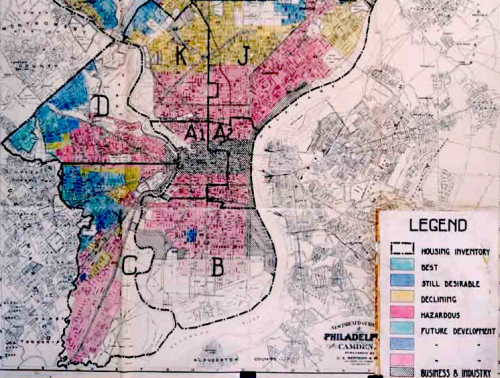Hello Fellow Learners!
This summer about 60 other Apple Distinguished Educators (ADE's) and I spent 10 days at the 2006 ADE Global Awareness Institute in Berlin and Prague. The focus was to brainstorm ways of bringing more of a global perspective to the digital classroom.

One of the major themes during our trip to Europe was "Walls". It may have not been as intentional, but it seemed that another theme was the suffering of the Jewish people over the millenia (not just the Holocaust generation). Regarding the wall, one of my fellow travelers wrote a reflection that I agree with in part, but it definitely pushed some other buttons of mine:
On Aug 11, 2006, at 10:50 AM, someone wrote:
Last night, a friend of mine just returned from Israel and Gaza where she stayed with some Palestinian families and pondered the new wall that has been built.
It was quite a conversation, that I of course recorded, about how families had been divided who were neighbors the day before. How one side of the wall was wealthy and the other poor. How paintings and art decorated one side and bare cement the other. How the wall was keeping one side out. I don't understand how a generation who saw the Berlin Wall come down could construct another wall in Jerusalem, Bethlehem, and around settlements on Palestinian land.
Our project work could never be more timely. I keep asking myself, what can I share to bring thoughtfulness about the issue of "what am I shutting out," and build partnerships.
I would like to respectfully provide a little bit different perspective on the Israeli Security Barrier (the majority of which is a chainlink fence - not actually a wall).
I really think that there are _more differences than similarities_ between the Berlin Wall and the barrier in Israel. The biggest difference is the reason that the two barriers were erected:
"The Berlin Wall was designed by the Communist regime of East Germany to solidify and perpetuate the division of the city by keeping the German citizens of "East Berlin" ― who sought only freedom and contacts with their German brethren in "West Berlin" ― locked in...
In stark contrast, Israel is building the anti-terrorist fence for only one purpose ― to keep Palestinian terrorists, who wish to murder and maim Israeli citizens, out. Israel, a democratic society, is building the fence to protect its citizens from deadly attack, not from peaceful contacts with the other side."
As with the efforts being made in the US to protect against terrorism, not only are such measures expensive but inconvenient for the innocent.
I think we need to be careful about demonizing "Walls".
I love my back yard, and I consider myself someone who thoroughly enjoys being outdoors, but I live within walls that protect me from lightning, rain, wind, mosquitoes and mold. For another example- although it is an inconvenience and tremendous expense, I feel reassured that there is a barrier between the airplane I board and the general population of people outside the airport.
Terrorists have broken all rules of decency in their efforts to try and get what they want. They don't wear uniforms that identify themselves as combatants (in fact they often wear Israeli army and police uniforms to deceive their victims). They don't engage the Israelis on the battleground, and they don't go up against soldiers - instead they go to wedding parties, restaurants, crowded busses and they target unarmed innocent children, women and citizens. These men (and few women) are certainly on a mission of permeating Israeli society with a sense of constant terror and uncertainty... it is not only bloody and hateful, but intent on demoralizing a people. In retaliation for these attacks the Israelis have gone to tremendous extremes to surgically go after the terrorists, often putting their own soldiers at much greater risk to avoid harming the human shields that the terrorists encamp among. There have been mistakes, and there have been apologies, but I don't recall any apologies from the terrorists for killing and maiming innocent bystanders.
How do you defend against such a thing? The Jews have suffered under this constant sense of impending attack... who can blame them for building a barrier to control where and who crosses over into their communities? This is not nearly as sudden as the Berlin wall, this is after years and years of battling these attacks and has been a slow process where the Israelis have tried to strike a fair balance between their need for greater security and a humanitarian appreciation of Arab rights:
http://tinyurl.com/r9n35The wealth and lack of wealth that you mentioned is not really a result of biased treatment from the Jewish people... the Jews have been willing to share their land with Islamic and Christian people who are not bent on destroying Israel as a nation. Israel even has Israeli Arab and Christian Knesset Parliament members. Even their most holy location - the Temple Mount - is under the management of the Arabs. The Jews are very industrious and and some of them have brought wealth with them from around the world- they have made the desert bloom, they are second only to the US for international patents... and they have given a tremendous amount of aide the Palestinian Authority (along with the millions that the UN and other nations have provided over the years). But the corruption of the Palestinian Authority is pretty well documented. Very little of the money reached the people. Instead, the Arab nations are using the refugees as pawns to evoke the sympathy of the world for their plight. As wealthy as the oil rich Arab countries are, they are doing very little to help the refuges.
Although the moment any wall goes up, it divides people in "one day" - this barrier has been a very gradual process with public lands being used if at all possible, and full compensation for private lands being used - either lump sum or annual rental. It was not like we heard in Berlin - where it happened so suddenly that people were stuck on the wrong side and taken by total surprise.
So, while walls and fences and other barriers are often not ideal, they sometimes are a "necessary evil". Israel has seen a statistically significant drop in the number of attacks and attempted attacks in the areas where the security barrier is in place. I am guessing that if (or when) our US borders were successfully being breached by terrorists, we would be even quicker than the Israelis to erect our own "walls" along our borders.
Yesterday I attended a Israeli Solidarity Peace Rally with family and friends. One of the most moving moments was the words from a Holocaust survivor who lost all of his loved ones under Hitler's death camps: "...All we are asking is a to live safely at peace with our families within the borders of our homeland..."
I don't know- someone else might -is there another people whose most common greeting and farewell to each other is "Shalom" or "Peace"?
with great love and respect for all of humanity,
gs







 Are you connected? Or have you isolated yourself intellectually?
Are you connected? Or have you isolated yourself intellectually?




